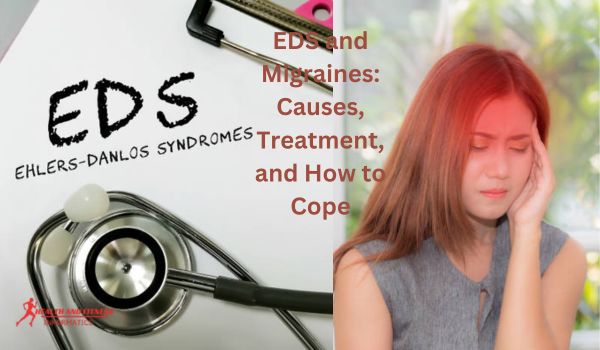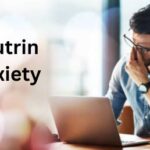Living with health conditions like Ehlers-Danlos Syndrome (EDS) and migraines can feel overwhelming. While EDS is a group of connective tissue disorders, migraines are intense headaches that can disrupt daily life. Interestingly, many people with EDS experience migraines, but understanding the connection between the two is crucial for proper management. This article will dive into the causes of EDS-related migraines, treatment options, and tips for improving quality of life.
What is Ehlers-Danlos Syndrome (EDS)?
Ehlers Danlos Syndrome is a set of genetic illnesss that influence connective tissues such as joints, blood vessels, and skin. Hypermobile EDS or hEDS is the common type of EDS among 13 types.
Common Symptoms of EDS
The most common symptoms of this connective tissue disease include;
- Joint hypermobility (overly flexible joints)
- Frequent joint dislocations or injuries
- Chronic pain and fatigue
- Fragile skin that can tear or hurt easily
Note: EDS affects connective tissues throughout the body, so complications like migraines can occur due to the involvement of blood vessels and nerves.
What are migraines?
Migraines are more than just severe headaches. They are a neurological condition that can cause intense pain, nausea, sensitivity to light, and even visual disturbances called auras.
Common symptoms of migraines
You can identify the migraines by notifying these symptoms
- Nausea or vomiting
- Sensitivity to light, sound, or smells
- Visual disruptions (blind spots or flashing lights)
- Severe pain on one side of your head
Note: Migraines can stay from a few hours to several days and also vary in intensity.
How are EDS and migraines connected?
People with EDS are more likely to experience migraines, but why? The exact cause isn’t fully understood, but several factors contribute to this link.
1. Blood vessel issues
EDS can weaken blood vessel walls, leading to problems with blood flow. Poor circulation may trigger migraines due to reduced oxygen supply to the brain.
2. Cervical instability
EDS often causes joint instability, including in the neck. Cervical instability can compress nerves or blood vessels, resulting in headaches or migraines.
3. Dysautonomia
Many EDS patients experience dysautonomia, a condition where the autonomic nervous system doesn’t function properly. This can lead to poor blood flow regulation, triggering migraines.
4. Tension and muscle pain
Muscle strain and tension are common in EDS due to joint instability. This can contribute to tension-type headaches or migraines.
Causes of migraines in EDS patients
Several triggers can make migraines more frequent or severe for people with EDS:
- Stress: Physical or emotional stress can exacerbate migraines.
- Sleep problems: EDS often causes poor sleep, which is a known migraine trigger.
- Dehydration: People with EDS may experience dehydration due to autonomic dysfunction, increasing migraine risk.
- Hormonal changes: Fluctuating hormones, especially in women, can trigger migraines.
- Dietary triggers: Certain foods like caffeine, chocolate, or processed meats may trigger migraines.
How to diagnose migraines in EDS patients
Proper diagnosis is essential for effective treatment. Health experts often use a combination of the following ways of diagnosis:
- Medical history: To Understand the individual’s symptoms and family history.
- Physical examination: Checking for signs of EDS, such as hypermobile joints or fragile skin.
- Imaging tests: MRIs or CT scans to rule out other causes of headaches.
- Symptom diary: Patients may be asked to track their migraines and potential triggers.
Treatment options for EDS-related migraines
Managing migraines in EDS patients requires a multi-faceted approach. Treatments can include medications, lifestyle changes, and specialized therapies.
1. Medications
Pain Relievers: Over-the-counter options like ibuprofen or acetaminophen can help with mild migraines.
- Triptans: Prescription drugs like sumatriptan target migraine pain specifically.
- Preventive medications: Beta-blockers, antidepressants, or anti-seizure drugs can reduce migraine frequency.
- Physical Therapy
Note: Physical therapy can strengthen muscles and improve neck stability, reducing migraine triggers like cervical instability.
2. Lifestyle modifications
Making modifications to daily habits can considerably reduce migraine happenings:
- Keep your body hydrated: Drink plenty of water everyday
- Set realistic sleep patterns: Stick to a regular sleep timetable and make a peaceful bedtime routine.
- Manage stress: Try relaxation techniques like deep breathing, yoga, or meditation.
- Identify triggers: Keep a migraine journal to pinpoint and avoid triggers.
- Dietary Adjustments
Adopting a balanced diet can help manage both EDS and migraines. Foods rich in magnesium, omega-3 fatty acids, and antioxidants can support overall health.
3. Cognitive behavioral therapy (CBT)
CBT helps patients manage stress and emotional responses to pain, which can be beneficial for both EDS and migraines.
Natural remedies for EDS and migraines
Some people prefer natural or holistic approaches alongside medical treatments. Here are a few options:
- Essential oils: Peppermint or lavender oil can provide relief when massaged onto the temples.
- Acupuncture: This traditional practice may help reduce migraine frequency and severity.
- Supplements: Riboflavin (vitamin B2), magnesium, , and coenzyme Q10 are often prescribed by doctors for migraines.
- Gentle exercise: Activities like swimming or walking can improve circulation and reduce tension.
How to cope with EDS and migraines
Living with both EDS and migraines can be challenging, but there are strategies to make daily life more manageable.
1. Build a Support System
You need to connect with your family members, friends, or may join the support groups to share your experiences and can get emotional support.
2. Educate yourself
To understand your condition empowers you to advocate for your requirements with your healthcare providers.
3. Work with specialists
EDS often requires care from multiple specialists, such as neurologists, geneticists, and physical therapists.
4. Pacing activities
Avoid overexertion by balancing activity with rest. Use tools like braces or supports to minimize joint strain.
5. Advocate for accommodations
If migraines or EDS symptoms affect work or school, request accommodations like flexible schedules or ergonomic setups.
When to see a doctor
If migraines become frequent, severe, or unmanageable, it’s essential to consult a doctor. Seek medical advice if you experience:
- Daily or persistent migraines
- Symptoms like confusion, vision loss, or impassiveness
- Worsening EDS symptoms
Conclusion
The connection between EDS and migraines is undeniable, but with the right strategies, managing both conditions is possible. A combination of medical treatments, lifestyle adjustments, and natural remedies can help reduce symptoms and improve quality of life. Remember, early intervention and proper care are key to minimizing the impact of these conditions.
FAQs
Can EDS cause migraines?
Yes, EDS can contribute to migraines due to blood vessel issues, cervical instability, and autonomic dysfunction.
What’s the best treatment for migraines in EDS patients?
A mix of medications, physical therapy, and lifestyle changes works best. Always consult a doctor for a personalized plan.
Are migraines common in hypermobile EDS?
Migraines are frequently reported in people with hypermobile EDS due to joint instability and poor circulation.
Can diet changes help with migraines?
Yes, avoiding trigger foods and consuming a nutrient-rich diet can reduce migraine frequency.
Is exercise safe for EDS patients with migraines?
Low-impact activities like swimming or yoga can be beneficial, but it’s essential to avoid overexertion.






